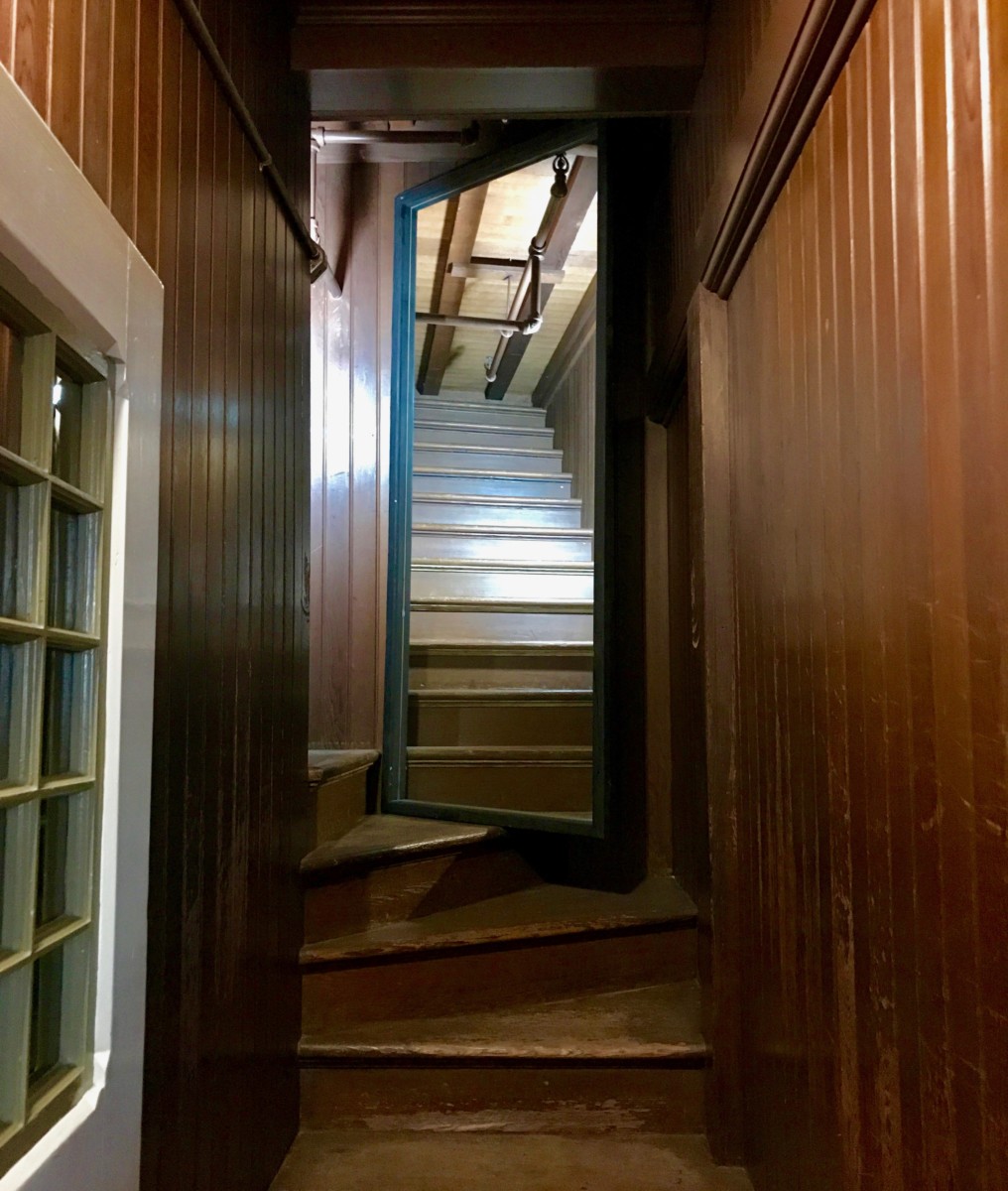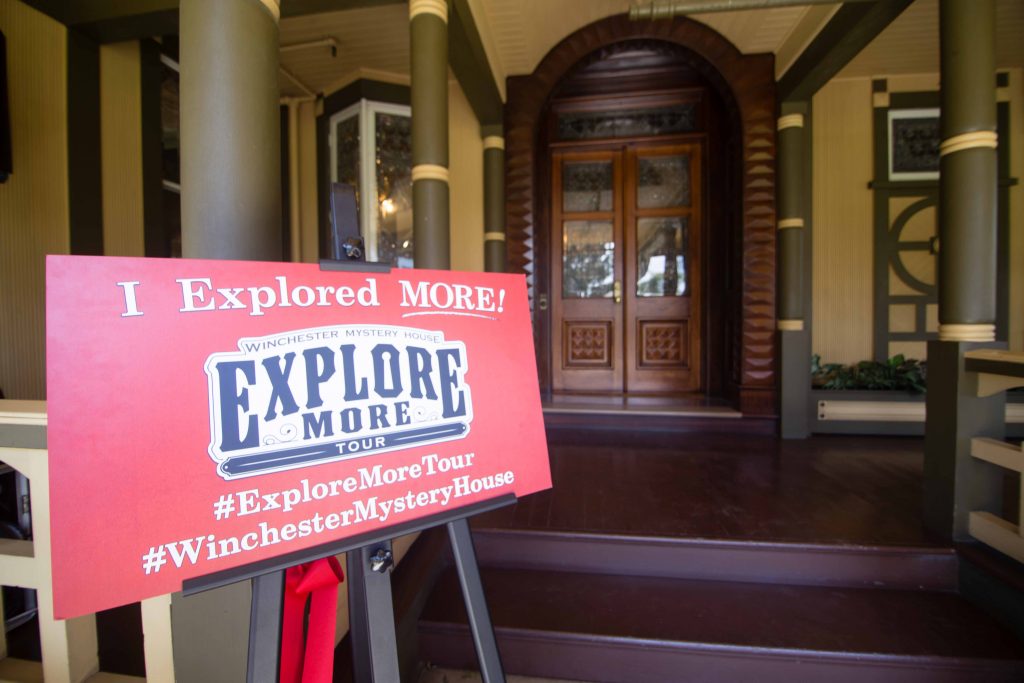Table Of Content
- The Terrifying True Story Of The Winchester Mystery House And The Tormented Heiress Who Built It
- The next stop in the house is the south conservatory, which is the room with the most windows.
- One of the World's Creepiest Attractions Just Got Creepier
- Under new management, the labyrinthine mansion is giving up more of its closely guarded secrets.
- Building The Winchester Mansion
- Moving to California

And they were sad and desperate for a way to see that they were okay.” Winchester herself was dealing with the loss of her whole family. Exactly why Winchester embarked on this dizzying cycle of building, undoing and rebuilding is impossible to say. The medium reportedly instructed her to constantly build a house for these ghosts. A popular tourist attraction, the house, along with many other cultural institutions in the United States, has closed to help curb the spread of coronavirus. But as Michele Debczak reports for Mental Floss, you can now explore the Winchester House from afar via a detailed video tour posted on the mansion’s website.
The Terrifying True Story Of The Winchester Mystery House And The Tormented Heiress Who Built It
It is also likely that the labyrinth construction of the home may have been the result of making the home functional after the earthquake. Furthermore, there are very few actual recorded incidences to back up the claims of the home being haunted by spirits. Because she was living off the gun company's fortune, the spiritualist told her to move to California and build a home that would appease and trap the ghosts who follow her.

The next stop in the house is the south conservatory, which is the room with the most windows.
To this day, the cracked walls and torn wallpaper from that night remain, as do the panels of stained-glass flowers that give the room its name. “How would you feel if, all of a sudden, you got knocked out of bed by an earthquake? “You think the world is coming down around your ears.” After she was finally rescued, Winchester left the house and stayed on a houseboat in San Francisco Bay for a while. Perhaps the boat’s steadier rocking helped quell her fears.
One of the World's Creepiest Attractions Just Got Creepier
She hoped, perhaps, to get advice from the beyond as to how to spend her fortune or what to do with her life. Born around 1840, Sarah Winchester grew up in a world of privilege. She spoke four languages, attended the best schools around, married well, and eventually gave birth to a daughter, Annie. However, tragedy struck in her late twenties when Annie died, followed by the death of Sarah’s husband William more than a decade later. At the time, newspapers were filled with advertisements, luring people to move across the country and settle in the newly incorporated California.
The floor plan is part of the Immersive 360° Tour, which includes "unprecedented access" to the home, including "...many rooms previously inaccessible on standard Estate tours." The cost? It's $8.99, and it also features a "Behind the Ropes" features (where, yes, you'll venture into rooms formerly roped-off). Throughout the years-long construction of the Winchester Mystery House, Sarah Winchester would never confirm that she was building a haunted house. Gold and silver chandeliers hung from the ceilings above hand-inlaid parquet flooring. Dozens of artful stained-glass windows created by Tiffany & Co. dotted the walls, including some designed by Louis Comfort Tiffany himself. One window, in particular, was intended to create a prismatic rainbow effect on the floor when light flowed through it – of course, the window ended up on an interior wall, and thus the effect was never achieved.
The most notable date in the construction of Llanada Villa was April 18, 1906, when the great San Francisco earthquake caused tremendous devastation throughout the region, and Sarah Winchester’s home suffered severe damage. The house was forever changed when chimneys collapsed, a wing was destroyed, and a prominent seven-story tower toppled down. Damage from the earthquake can still be viewed at the property even today, and the mansion was never restored to its former prominence. I have known about this famous mansion since I was a child. Many years ago, a publishing company put out a series of books that featured cut-out paper models of various haunted, mysterious houses. I took the time to meticulously put together a model of the Winchester Mystery House.
Even more luxurious than the fixtures was the plumbing and electrical work. Rare for the time, the Winchester Mystery House boasted indoor plumbing, including coveted hot running water, and push-button gas lighting available throughout the home. Additionally, forced-air heating flowed throughout the house.

Sarah’s inheritance was said to be more than 20 million dollars and included a 50 percent stake in the Winchester Repeating Arms Company. In 1881, Sarah was one of the wealthiest women in the world. The interior of the mansion remains closed due to the pandemic response, but there are open-air tours of Sarah's beautiful Victorian-style gardens.
In 1885, a widowed Sarah Winchester moved to California to start a new life in a farmhouse she built on 40 acres.
William and Sarah had one daughter, Annie, who died at just 6 weeks old. They never had any other children, and William died 15 years later from tuberculosis, in 1881 at age 43. The Cap is an unfinished round room constructed with redwood beams.
We depend on ad revenue to craft and curate stories about the world’s hidden wonders. Consider supporting our work by becoming a member for as little as $5 a month. Her work has appeared in a number of publications, including NYmag.com, Flavorwire and Tina Brown Media's Women in the World.
Throughout the house, you can find staircases that lead to nowhere, doors that open onto walls, and rooms with windows on the floor. The bizarre design elements feed into the theory that Winchester was trying to trap and confuse the ghosts that haunted her, but Boehme said there's a more realistic explanation. Winchester designed the home with no blueprints and no formal design experience. These design oddities may have been mistakes or a simple change of mind. However, it is unclear to this day if these choices were deliberate or accidental.
The True Story of the Winchester Mystery House, the Creepiest Mansion in the U.S. - House Beautiful
The True Story of the Winchester Mystery House, the Creepiest Mansion in the U.S..
Posted: Fri, 15 Sep 2023 07:00:00 GMT [source]
The standard hour-long guided mansion tour includes a romp through the gardens plus entry to an exhibition of guns and rifles. One particular attic space took the most effort, says the longtime house historian Janan Boehme, who helped with the restoration plans. There were staircases and things, but there was no railing, there was no safety at all,” she says. “If you walked across, you’d just fall through a hole.” The maintenance team had to build a new wooden walkway through the space. Shortly after her husband’s death, Sarah left their home in New Haven, CT and moved out west to San Jose, CA. There, she bought an eight-room farmhouse and began what could only be described as the world’s longest home renovation, stopping only when Sarah passed on September 5, 1922.
Eventually, the path leads up to the Witch’s Cap in the South Turret, billed as the highlight of the new tour. To reach it you must pass through a corridor scaled for a child’s playhouse, narrow and scarcely five feet high. There’s light flowing in from occasional windows, but even so, it’s hard to orient yourself in space as the walls close in. Such beliefs wouldn’t have been particularly unusual at the time. In the late 19th and early 20th centuries, there was a surge of what was called spiritualism all over the country. “All these women, they lost their husbands, their sons, their brothers, their fathers.
The consensus among the house’s staff is that she was a creative do-gooder who endured through profound personal loss. “She would give to causes that were dear to her, and she’d usually do it anonymously,” Boehme says. She paid her workers far more than the standard wage, and kept them on for many years in part because she wanted to ensure their livelihoods. Ignoffo speculates that she threw herself into her all-consuming building project to feel closer to her late husband—architecture had long been one of William Winchester’s passions. In the Daisy Bedroom—which is on the original tour—Winchester rang a bell to summon her servants, who couldn’t find her in the chaos.

No comments:
Post a Comment